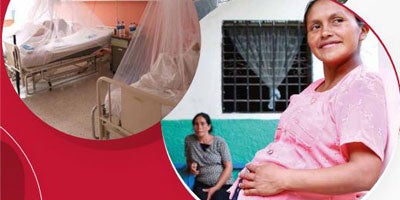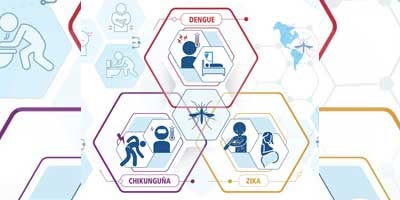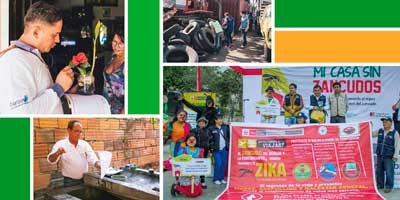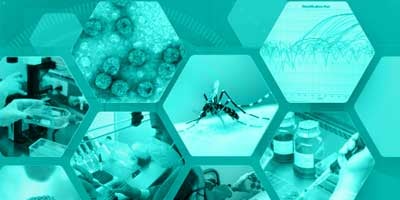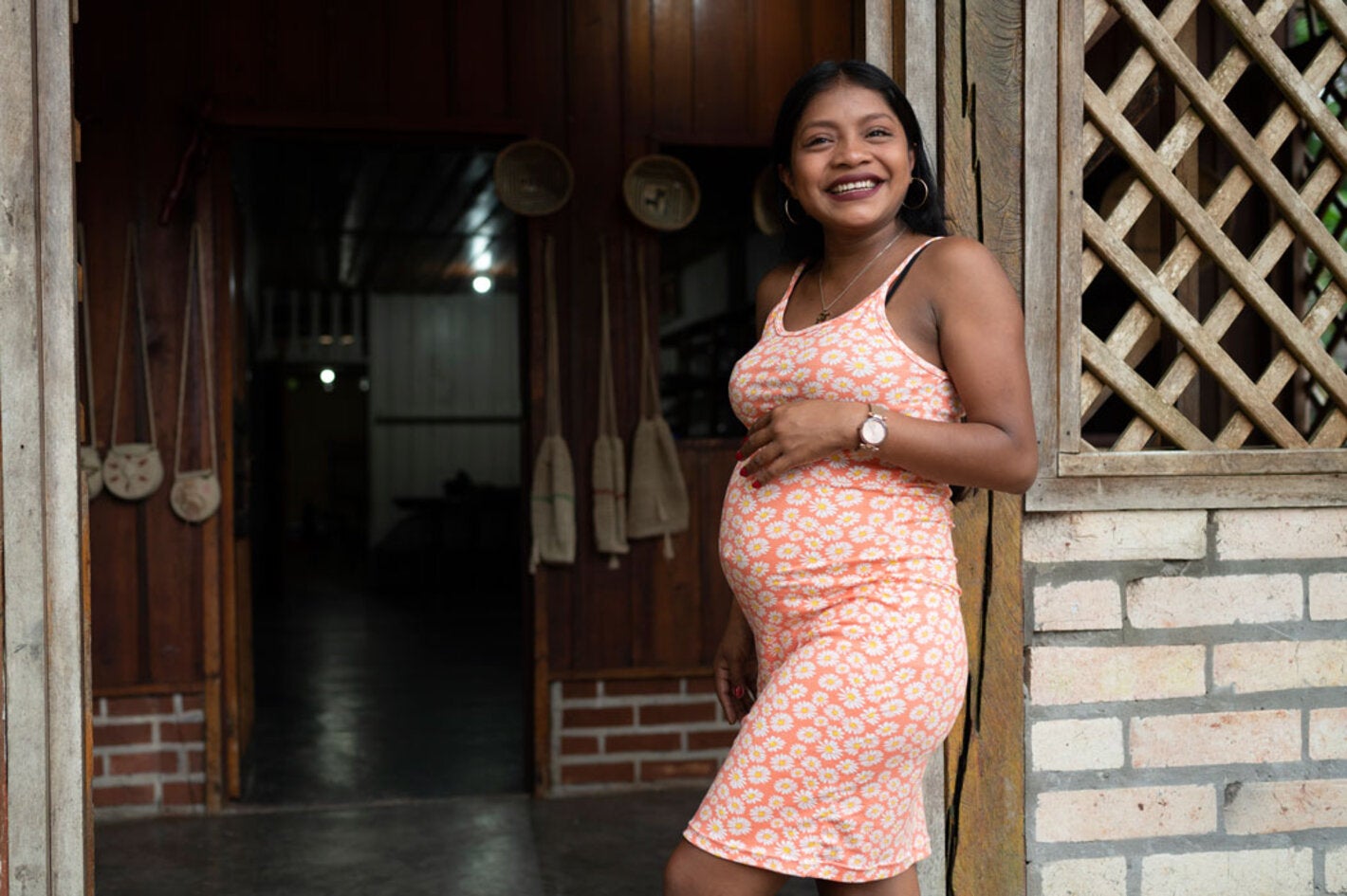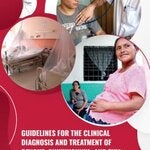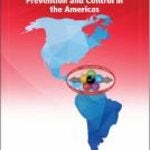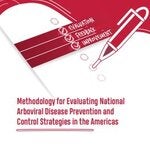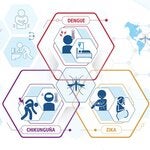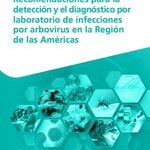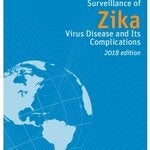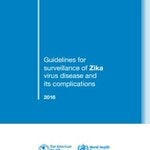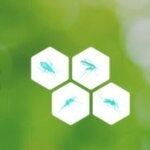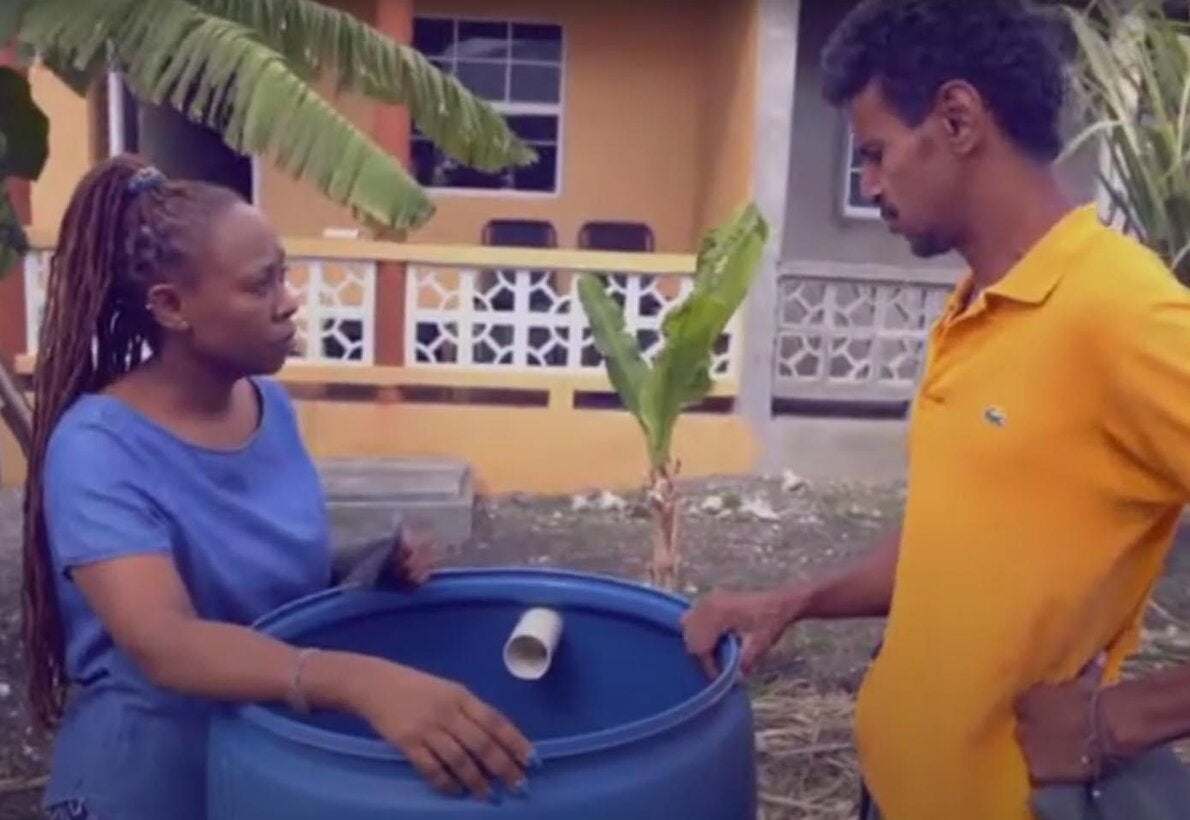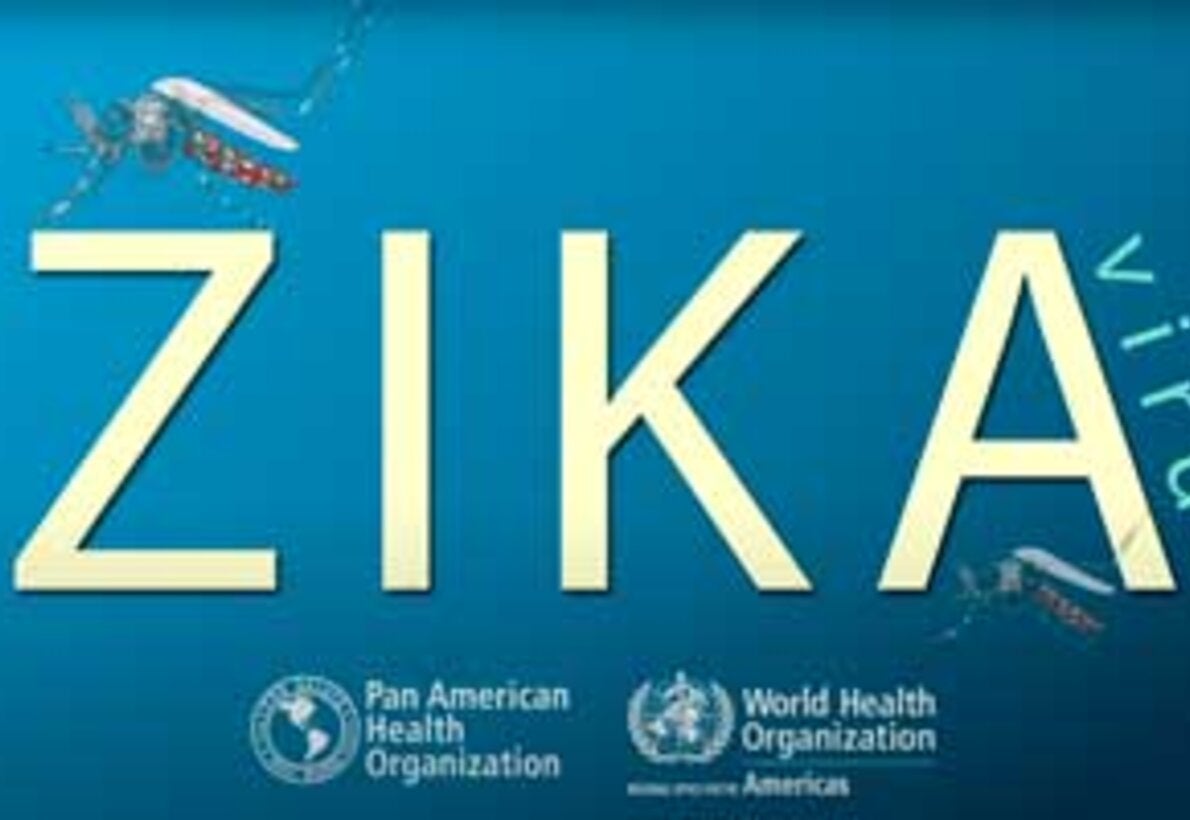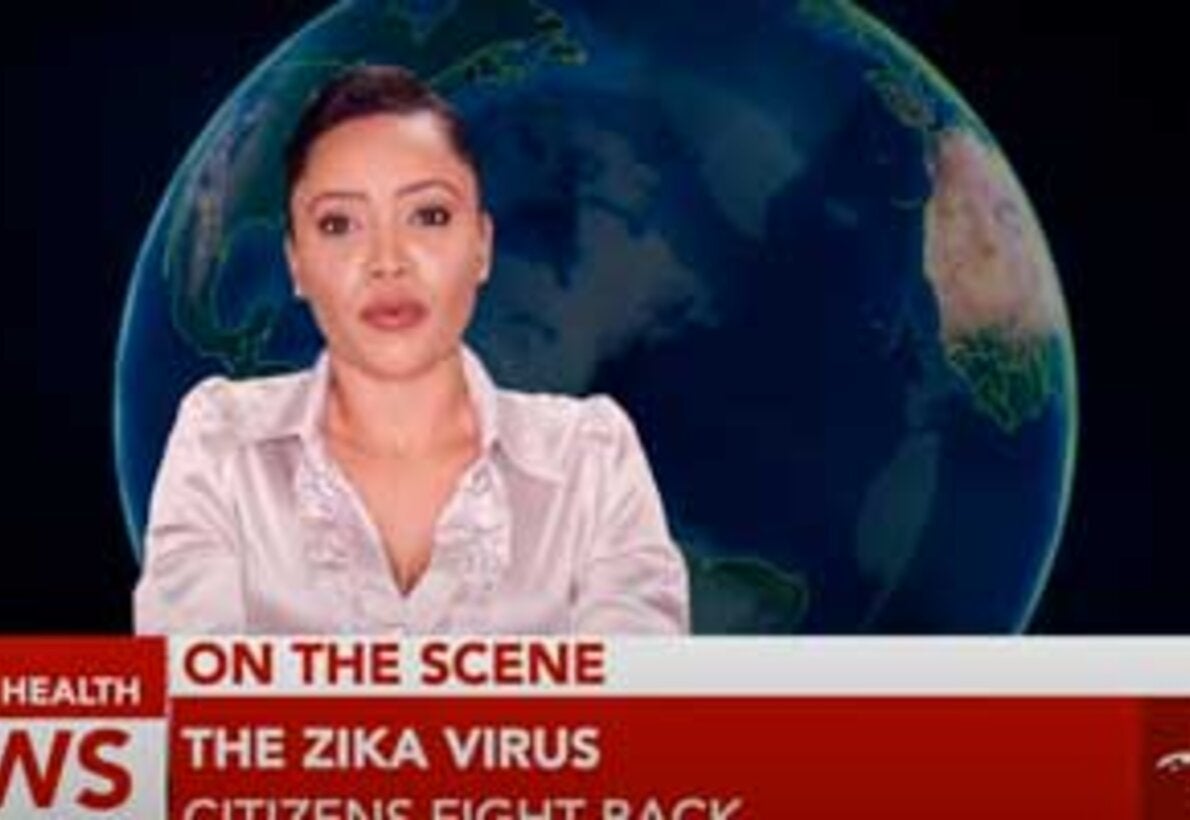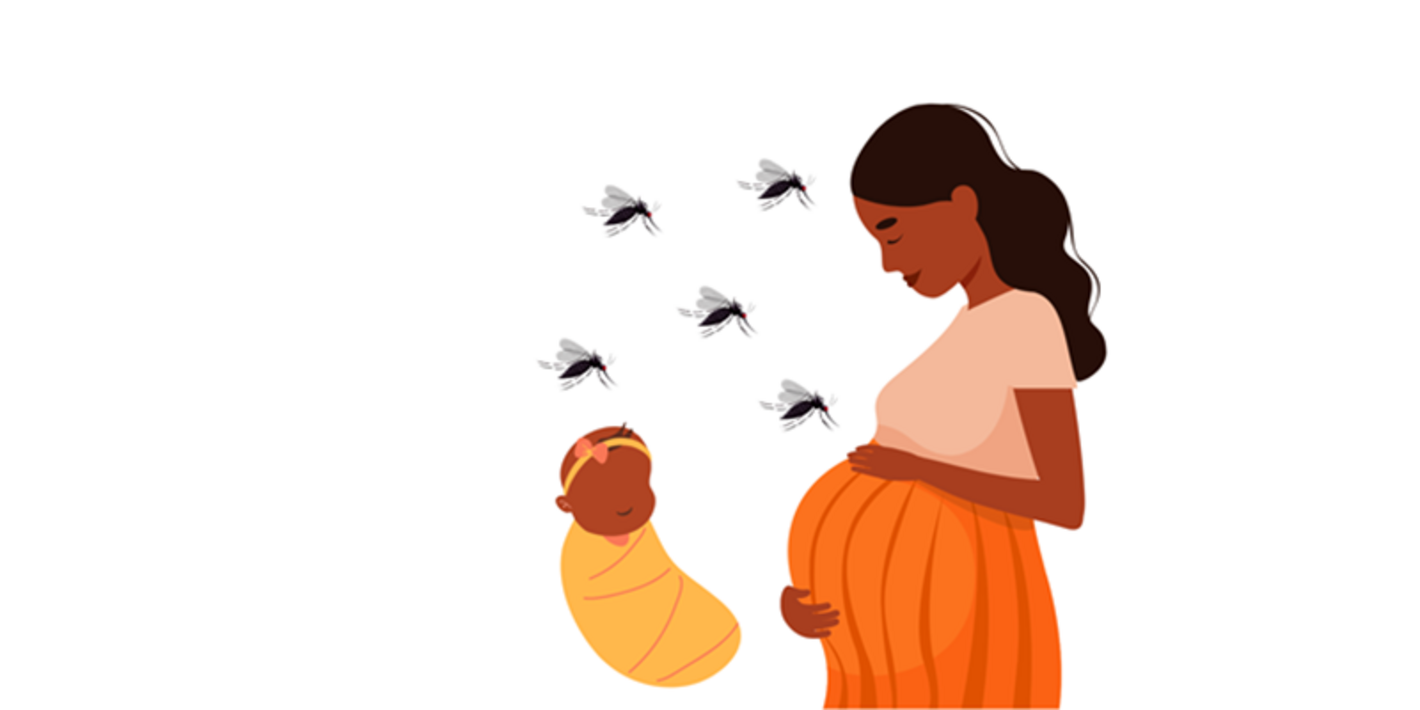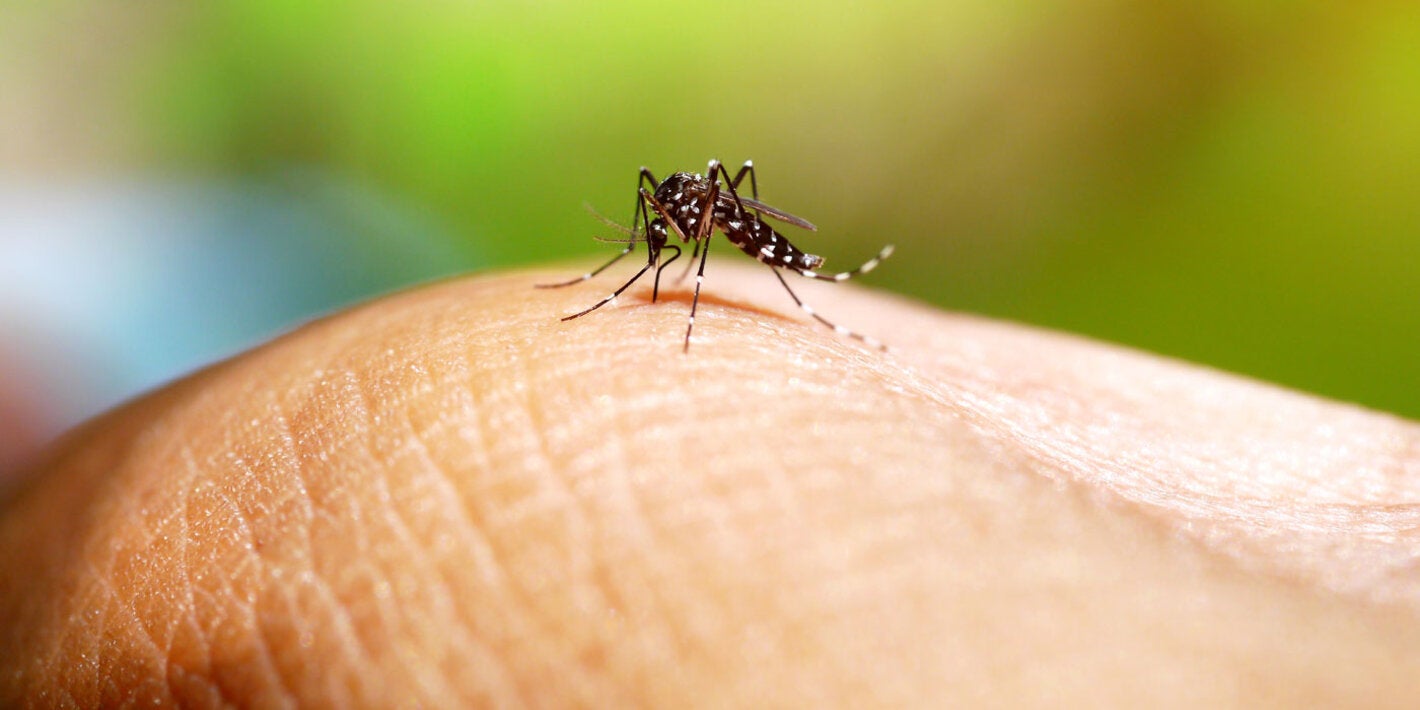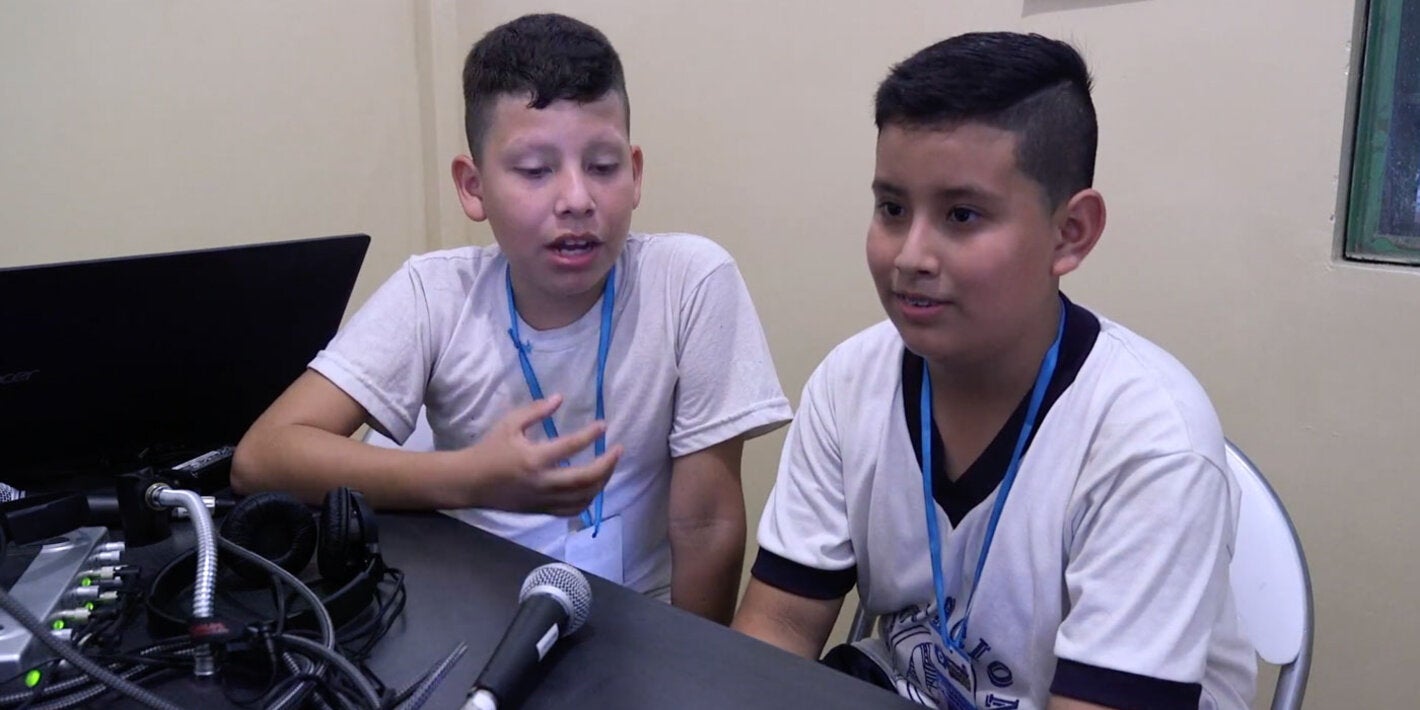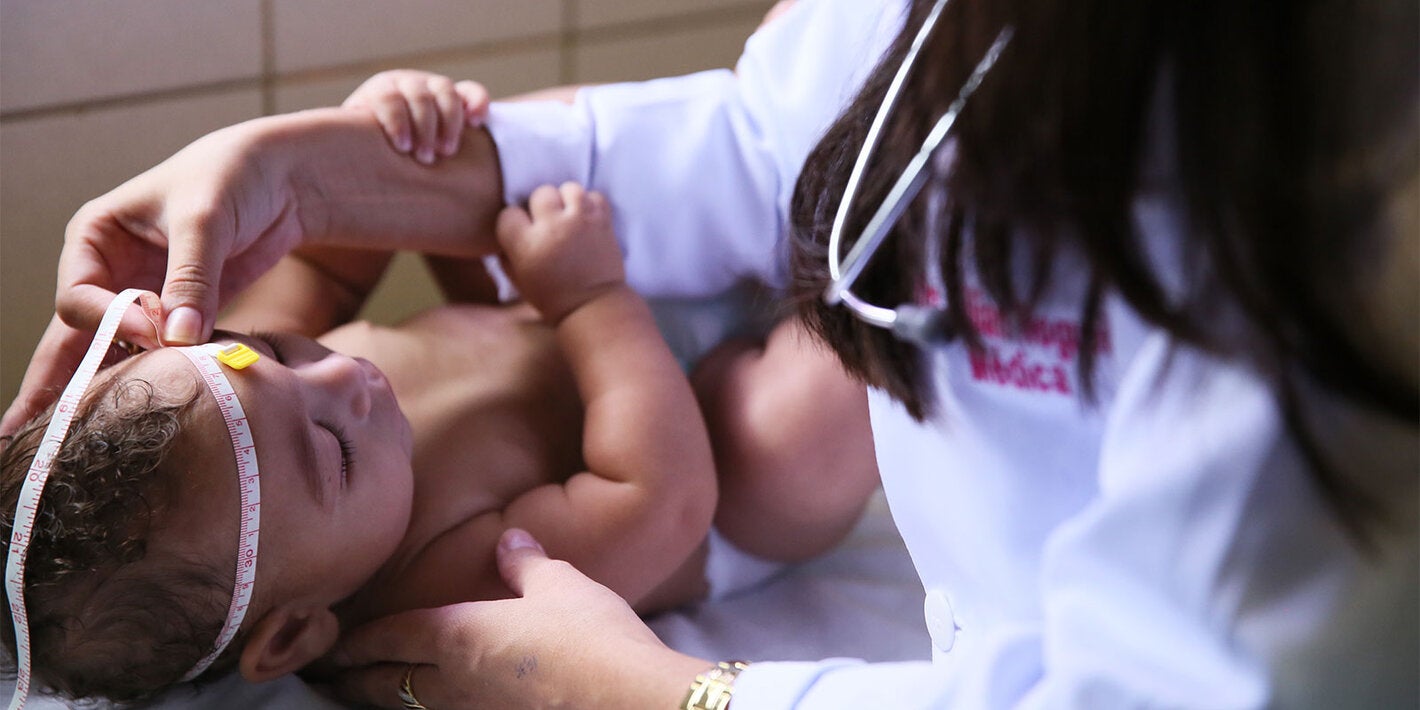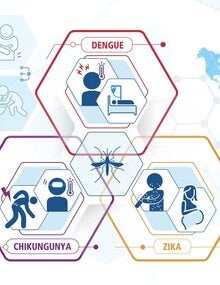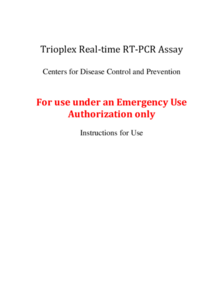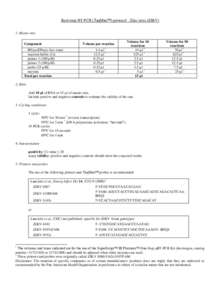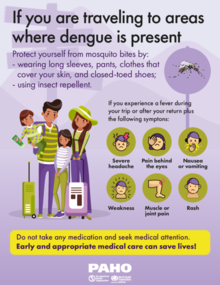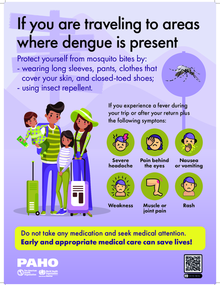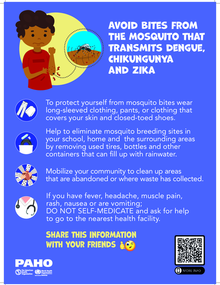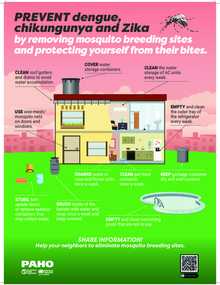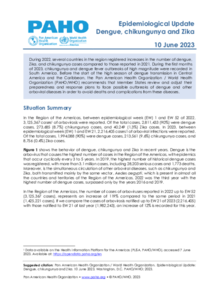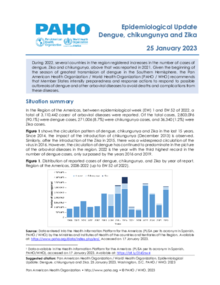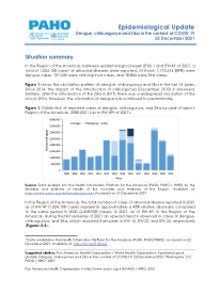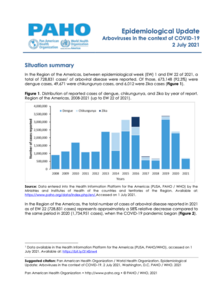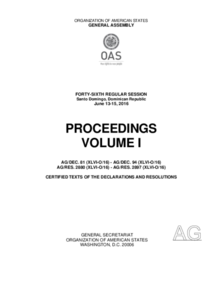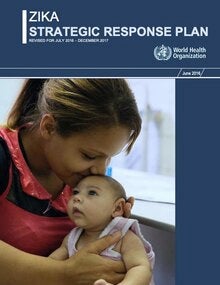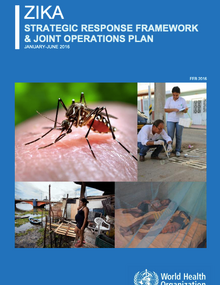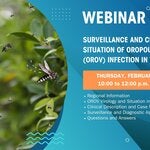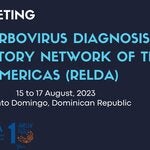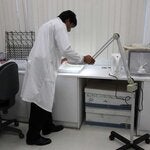SUBMENU
Zika fever is an infectious disease caused by the Zika virus (ZIKV) and transmitted through the bite of Aedes mosquitoes infected with ZIKV. The disease is mainly characterized by a rash (mainly maculopapular and cephalocaudal distribution), pruritus, non-purulent conjunctivitis, arthralgia, myalgia, periarticular edema, and fever.
One in four infected people may develop symptoms, but in those who are affected the disease is usually mild, with symptoms lasting between 2 and 7 days. The clinical appearance is often similar to dengue or chikungunya, also a mosquito-borne illness.
• The virus was isolated for the first time in 1947 in the Zika forest in Uganda. Since then, it has remained mainly in Africa, with small and sporadic outbreaks in Asia.
• In 2007, a major epidemic was reported on the island of Yap (Micronesia), where nearly 75% of the population was infected.
• In May 2015, the public health authorities of Brazil confirmed transmission of the Zika Virus in the country's northeast. In July 2015, it was discovered that ZIKV was associated with Guillain-Barré syndrome.
• In October, it was also linked to central nervous system malformations at birth, which includes microcephaly.
• In February 2016, the World Health Organization (WHO) declared ZIKV-related microcephaly a Public Health Emergency of International Concern (PHEIC). However, in November 2016, WHO declared the end of the emergency.
• Zika now is endemic in the Americas. For more updated epidemiological information, learn
more on Plisa.
About Zika...
ZIKV is transmitted from person to person mainly through the bite of the Aedes aegypti mosquito infected with the virus. Sexual transmission has also been documented.
The estimated incubation period (time between exposure and symptom onset) for ZIKV disease is 3 to 14 days.
Most people infected with ZIKV are asymptomatic. Those who develop the disease usually present a mild picture that includes rash (mainly maculopapular and cephalocaudal distribution), pruritus, non-purulent conjunctivitis, arthralgia, myalgia, periarticular edema and fever. These symptoms usually last 2 to 7 days.
There is no specific medicine to treat Zika.
There is scientific consensus that ZIKV is a cause of microcephaly and Guillain-Barré syndrome.
About Aedes aegypti...
Aedes aegypti is the vector that presents the greatest risk of arbovirus transmission in the Americas and is present in almost all countries of the hemisphere (except Canada and continental Chile). It is a domestic mosquito (that lives in and near houses) that reproduces in any artificial or natural container that contains water.
The mosquito can complete its life cycle, from the egg to the adult, in 7-10 days; adult mosquitoes usually live 4 to 6 weeks. The female Aedes aegypti is responsible for the transmission of diseases because she needs human blood for the development of her eggs and for her metabolism. The male does not feed on blood.
The mosquito is most active early in the morning and at dusk, so these are the periods of greatest risk of bites. However, females, who need to continue feeding, will seek a source of blood at other times. The female Aedes aegypti feeds every 3-4 days; however, if they cannot draw enough blood, they continue feeding each moment they can.
Aedes aegypti prefers to lay its eggs in artificial containers that contain water (drums, barrels and tires, mainly) in and around homes, schools and workplaces. Aedes aegypti eggs can withstand dry environmental conditions for more than a year: in fact, this is one of the most important strategies that the species uses to survive and spread.
To eliminate mosquitoes, the following actions are recommended: avoid collecting water in open-air containers (pots, bottles or other containers that can collect water) so that they do not become breeding sites for mosquitoes; adequately cover water tanks and reservoirs to keep mosquitoes away; avoid accumulating garbage, throwing garbage in closed plastic bags.
- PAHO/WHO provides advice and technical support to prevent and control dengue. This work is carried out based on the Integrated Management Strategy for the Prevention and Control of Arboviral Diseases, which was adopted by PAHO/WHO Member States in 2016 (CD55.R6).
- In 2008, PAHO/WHO Member States established a Network of Dengue Laboratories of the Americas (RELDA) to strengthen technical capacities for dengue diagnosis. Currently, RELDA has been expanded to include chikungunya and Zika fever and comprises 40 laboratories in 35 countries in the Region.
- PAHO/WHO is supporting the development of an integrated epidemiological surveillance system model for dengue, chikungunya, and Zika. This model integrates epidemiological, clinical, laboratory and entomological surveillance to generate standardized and timely information for decision making. A technical document with guidelines for integrated epidemiological surveillance of arboviruses will be published in 2024. You can find the case definitions here.
- Under the concept of collaborative surveillance, PAHO/WHO develops and makes virtual collaboration spaces (ECV) available to countries. Through the ECVs, countries and PAHO collaborate in the real-time analysis of their epidemiological, clinical, laboratory, and entomological data, as well as the generation of automated reports and bulletins.
- PAHO/WHO promotes a clinical technical cooperation bundle in the countries to strengthen national capacities for clinical diagnosis and case management of dengue, chikungunya, and Zika in the Region. This bundle includes technical documents and clinical guidelines, virtual self-learning courses, a regional virtual classroom to train the trainers, and the formation of national networks of clinical experts in arboviral diseases.
- PAHO/WHO is working to strengthen regional and national capacity for the prevention and control of vectors. To achieve this, the organization has implemented the Plan of Action on Entomology and Vector Control 2018-2023. As part of this plan, various initiatives have been developed to improve entomological surveillance systems, monitor and manage resistance to insecticides used in public health, and train professionals in entomology through a virtual course on Surveillance and Control of Vectors of Public Health Importance. Additionally, PAHO/WHO is promoting the implementation of a new model of interventions for the control of Aedes aegypti and providing support to countries for the rational deployment of new technologies and approaches for vector control.




